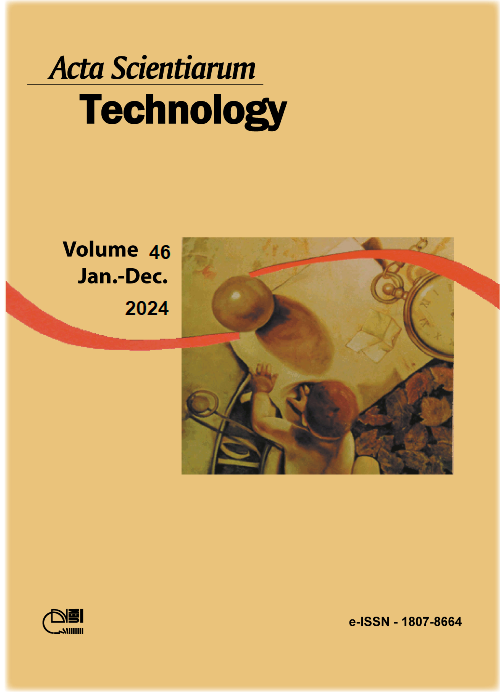Lipid microcapsule synthesis from Melaleuca alternifolia (tea tree) hydrolate
DOI:
https://doi.org/10.4025/actascitechnol.v46i1.66904Keywords:
Melaleuca alternifolia by-product; microemulsion; ultrasonication; double emulsion; optimization.Abstract
This study aimed to use Melaleuca alternifolia hydrolate to produce and optimize microparticles via three microemulsion processes: simple hot; ultrasonic; and double. Surfactants, including stearic acid, lecithin and Tween 80 were utilized in these processes. Experimental diameters were optimized using a 2² factorial planning of response surfaces. The smallest experimental mean diameters were obtained by R4 simple hot microemulsion with lecithin, R7 simple hot microemulsion with Tween 80, R4 ultrasonic microemulsion with lecithin; R4 ultrasonic microemulsion with Tween 80; and R5 double microemulsion. The latter obtained the smallest mean particle diameter of all experiments (0.65 ± 0.10 μm). All particles formed with Melaleuca alternifolia hydrolate obtained an isoelectric point equal to zero at pH 7. Fourier-transform infrared spectroscopy was used to characterize the best conditions of each technique. In conclusion, our findings suggest that as the system receives more energy, the mean particle diameter tends to decrease.
Downloads
Downloads
Published
How to Cite
Issue
Section
License
DECLARATION OF ORIGINALITY AND COPYRIGHTS
I Declare that current article is original and has not been submitted for publication, in part or in whole, to any other national or international journal.
The copyrights belong exclusively to the authors. Published content is licensed under Creative Commons Attribution 4.0 (CC BY 4.0) guidelines, which allows sharing (copy and distribution of the material in any medium or format) and adaptation (remix, transform, and build upon the material) for any purpose, even commercially, under the terms of attribution.
Read this link for further information on how to use CC BY 4.0 properly.















8.png)




